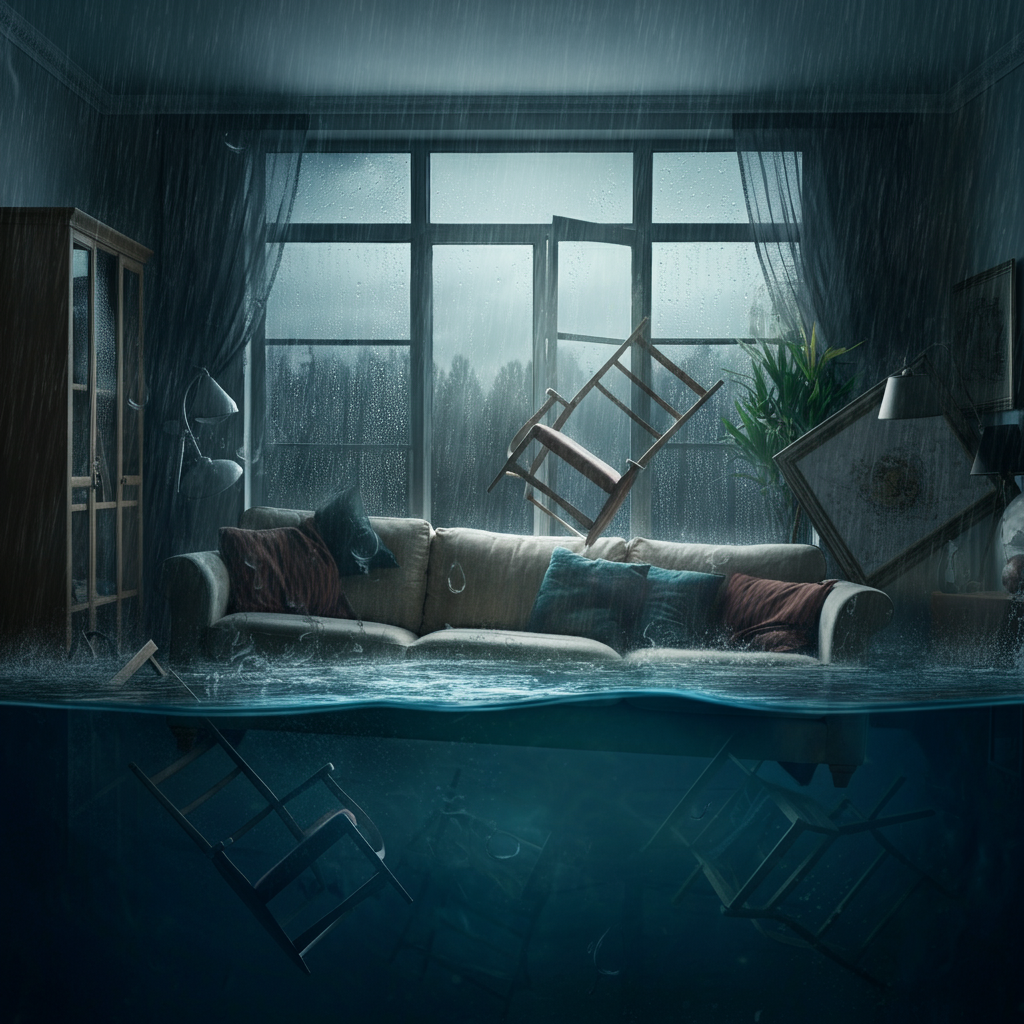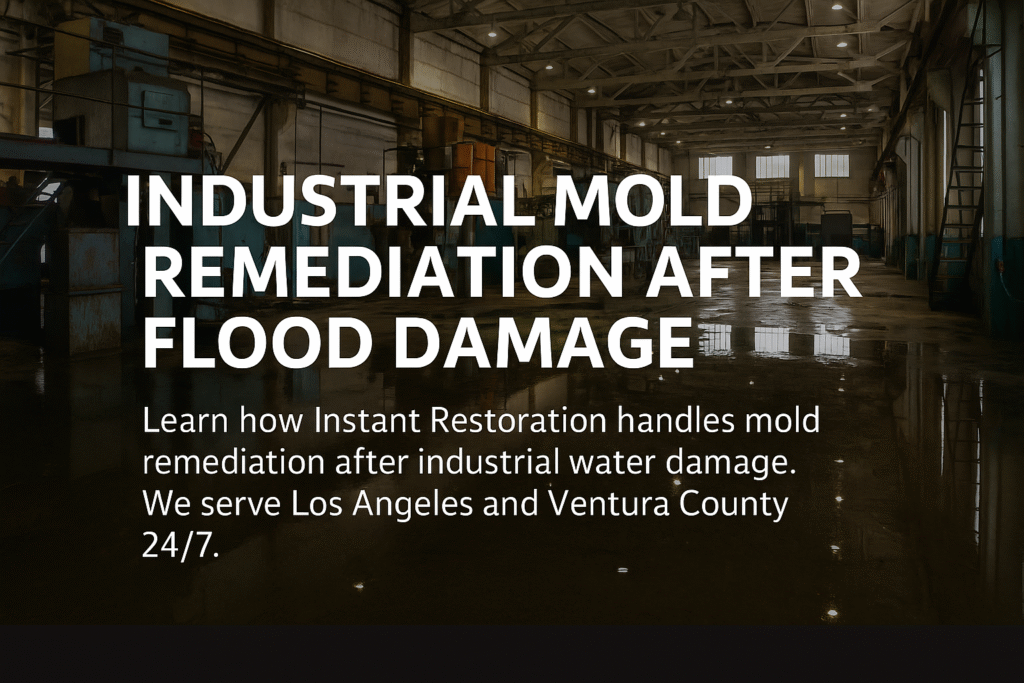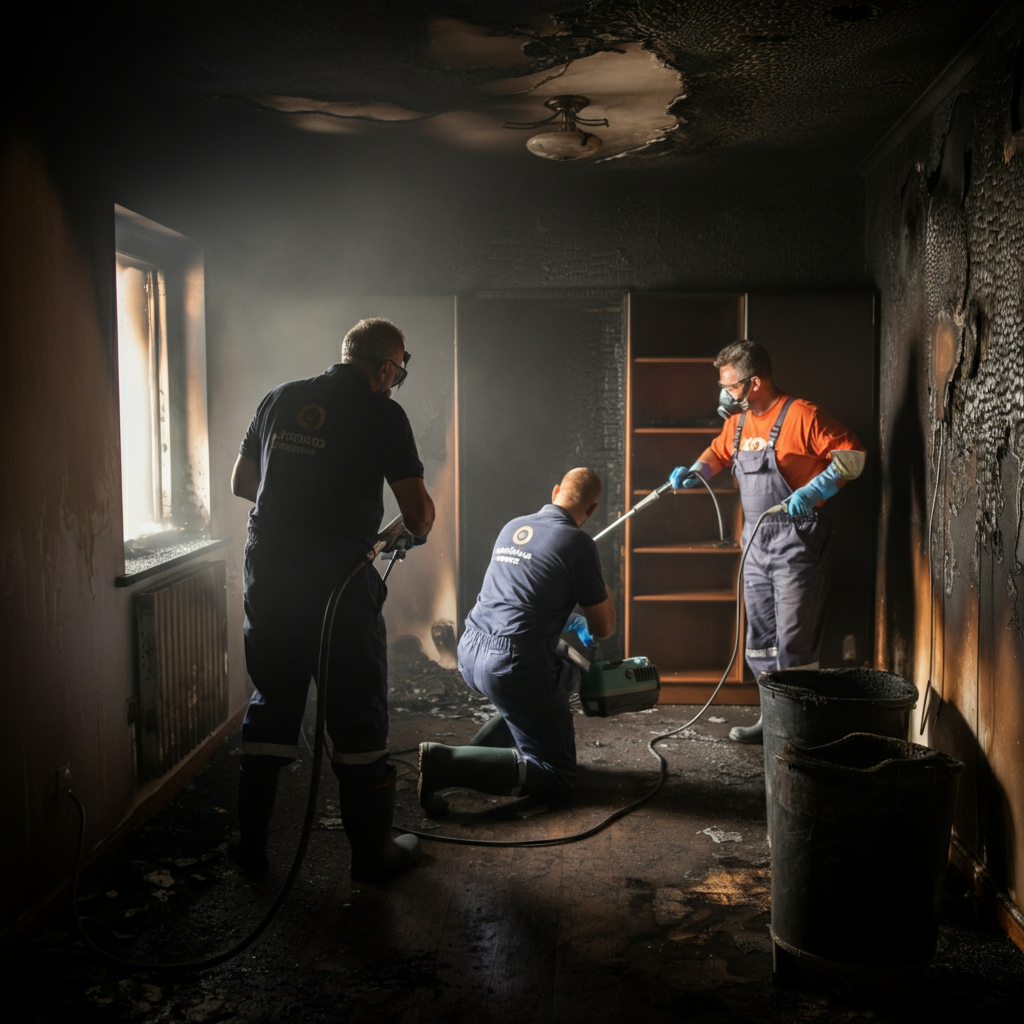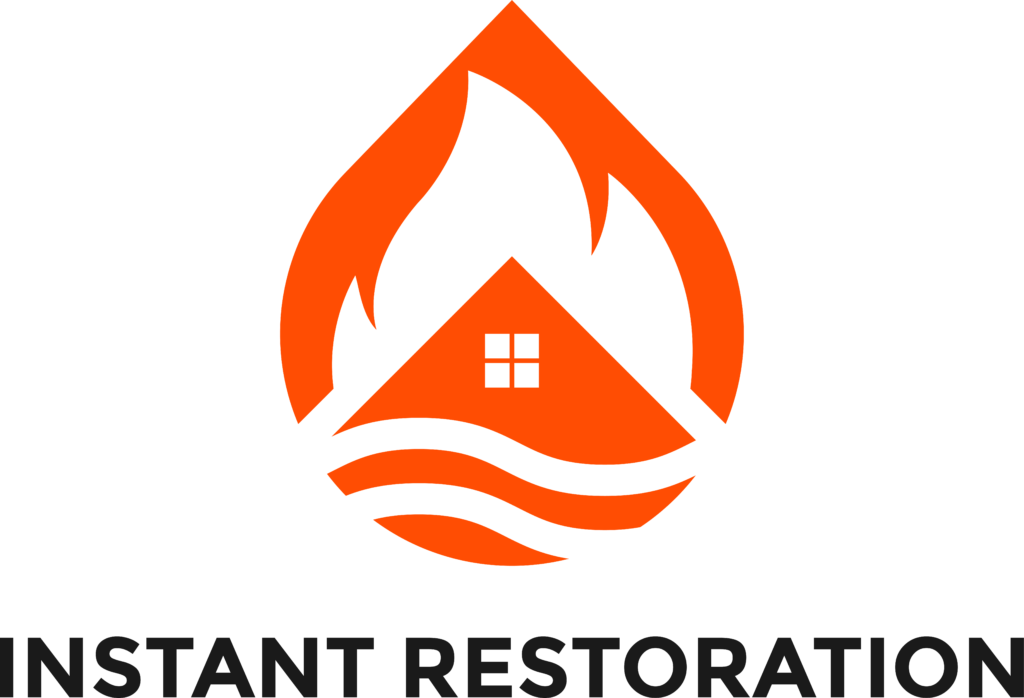In the commercial and industrial sectors, flood damage is more than surface-level. Moisture seeps into drywall, insulation, equipment cavities, and structural crevices, leading to one inevitable and dangerous outcome: mold. At Instant Restoration, we provide fast, certified industrial mold remediation designed specifically for warehouses, manufacturing plants, distribution centers, and office buildings.
We specialize in commercial mold removal, mold inspection, and mold abatement for flood-impacted properties throughout Los Angeles County and Ventura County. Our technicians are IICRC-certified and available 24/7. Floods Create Hidden Mold Threats in Industrial Facilities

Why Mold Is So Common After Flood Damage in Industrial Buildings
Industrial and commercial properties are especially vulnerable to mold due to:
- Large square footage with minimal ventilation
- Complex HVAC systems that spread spores
- Hidden wall cavities and mechanical chases
- Flood-prone basements, crawlspaces, and slab foundations
- Delayed detection due to staff evacuation or power loss
Within 24–48 hours of water intrusion, toxic mold—especially black mold—can begin to colonize. This poses significant health risks, damages property, and interrupts business continuity. Dealing with urgent water and mold issues quickly is essential to minimize repair costs and avoid causing significant property damage. Identifying and removing visible mold is a key step in the remediation process. Major restoration projects may require addressing damage in various areas of the property, including multiple rooms or sections. Water emergency preparedness and a quick response are critical to prevent causing significant property damage. Taking effective action when dealing with a water emergency, such as a burst pipe, helps minimize damage and restore normal operations faster. Floods Create Hidden Mold Threats in Industrial Facilities
Our Complete Mold Remediation Process
Every flood restoration project includes detailed mold protocols to ensure the safety and operational continuity of your facility.
- Emergency Water Damage Extraction
We use commercial-grade vacuums and extraction equipment to immediately remove standing water. This includes flood damage repair, bursted pipe cleanup (with burst pipe being a common cause of water emergencies in industrial settings), and water removal and drying. A quick response and effective action are crucial when dealing with a water emergency to minimize damage and disruption. - Mold Inspection & Testing
Using moisture meters, thermal cameras, and air quality testing, we assess the severity of microbial activity. If mold is detected, we categorize the loss and develop a containment strategy. It is also important to determine the source of water intrusion to prevent ongoing mold growth and future issues. - Containment & Negative Air Pressure
HEPA air scrubbers and containment barriers (plastic or drywall enclosures) prevent spore migration during demolition. - Material Demolition
Water-damaged sheetrock, insulation, carpet, and other porous materials are removed in accordance with mold abatement regulations. Certain materials such as drywall, insulation, and carpeting may need to be discarded to fully eliminate mold and prevent its return. - Surface Cleaning & Antimicrobial Treatment
Industrial surfaces are scrubbed, fogged, and disinfected with EPA-registered biocides to kill remaining spores. - Drying & Dehumidification
High-capacity desiccant dehumidifiers are deployed to bring humidity below 50%, which halts mold growth. - Post-Remediation Clearance Testing
Independent lab results confirm whether the site meets environmental and air quality safety standards. - Rebuild & Restoration
Once cleared, our restoration company rebuilds all removed structures, restoring your property to normal operations and routines and returning your property to full functionality.
What Types of Businesses Do We Serve?
We’re not just a residential mold removal company. We provide commercial restoration service and industrial damage repair for any home or business affected by water or mold damage, including:

- Factories & assembly plants
- Logistics hubs & warehouses
- Office complexes
- Government & municipal buildings
- Cold storage facilities
- Data centers & server farms
- Multi-unit commercial spaces
- Hospitality buildings & hotels
- Schools and hospitals (ADA/OSHA-compliant protocols)
Why Our Industrial Clients Trust Instant Restoration
✅ IICRC-certified mold remediation company
✅ Industrial drying equipment & desiccant trailers
✅ Licensed general contractor for full rebuilds
✅ Full-service: inspection, remediation, repair, and clearance
✅ We handle all communication with your insurance provider
✅ OSHA-compliant safety protocols for job site security
✅ Immediate response teams stationed across LA and Ventura
✅ One call gives you immediate access to emergency response and water restoration services, making the process fast and convenient.
How to Clean Black Mold in an Industrial Facility
Many clients ask, “Can we clean black mold ourselves?” The short answer: no—not in an industrial setting.
OSHA and EPA guidelines require:
- HEPA air filtration
- Controlled demolition
- Negative air pressure
- PPE for all workers
- Biohazard disposal protocols
Black mold removal in a commercial or industrial setting must be handled by a professional mold remediation company. DIY solutions like bleach will only treat surface growth, not the spores embedded inside structural components.Floods Create Hidden Mold Threats in Industrial Facilities
How Long Does Mold Remediation Take?
- Small-scale contamination: 3–5 days
- Medium-sized warehouse: 7–10 days
- Large industrial sites: 2–3 weeks (depending on scope)
Delays from insurance approvals or access limitations may extend the timeline. We always aim to minimize operational downtime with strategic scheduling and team scaling.
Is Mold Remediation Covered by Insurance?
Most commercial property policies cover mold if it results from a sudden and accidental event, like:
- Pipe burst
- Roof collapse
- Storm or flood event
- HVAC failure
- Fire suppression runoff
Our team works directly with adjusters and provides detailed documentation, including:
- Scope of work
- Pre-/post-mitigation photos
- Moisture maps and lab results
- Xactimate estimates
We help you answer questions like: Who pays for mold remediation?Is mold remediation covered by insurance?
We also assist clients with the claims process, simplifying insurance paperwork and expediting restoration. Homeowners and business owners alike are affected by water and mold damage, and insurance may cover both structural repairs and personal property losses. Floods Create Hidden Mold Threats in Industrial Facilities

Additional Services We Offer
Alongside mold removal, we also handle:
- Fire damage cleanup
- Smoke damage removal
- Suage cleanup & commercial suage cleanup
- Sheetrock water damage repair
- How to repair water damaged ceiling
- Water leak damage repair cost evaluations
- Crawl space mold remediation
- Attic mold remediation cost
- Basement mold removal
- Home mold inspection
- Bathroom mold removal
- Water damage cleanup
- Water restoration
Commercial SEO Keywords Included in This Blog
You’ll find seamless, non-spammy integration of:
- Mold removal company
- Mold remediation company
- Mold abatement company
- Mold removal
- Commercial mold removal
- Commercial water damage restoration company
- Emergency water damage restoration
- Fire damage restoration
- Smoke damage cleanup
- Flood damage repair
- Water mitigation
- Crawl space mold remediation
- Water damage extraction
- Black mold remediation
- Mold remediation near me
- Mold clean up services
- Best mold removal companies near me
- Professional mold removal
- Commercial restoration company
Partner with Instant Restoration Today
Don’t let mold compromise your safety or shut down operations. Call the professionals who understand industrial building systems and can act fast.
📞 Call now for 24/7 emergency dispatch or inspection
🌐 Visit Instant Restoration
Testimonials
Introduction: The Overlooked Dangers of Flooding in Industrial Facilities
Flooding in industrial facilities is a serious threat that extends far beyond immediate water damage. While the visible effects—such as soaked floors and damaged equipment—are alarming, the hidden dangers can be even more costly. One of the most significant risks is the rapid onset of mold growth, which can compromise the structural integrity of your property and lead to extensive remediation processes. Mold not only causes significant property damage but also poses health risks to employees, potentially leading to respiratory issues and other complications.
Prompt action is essential. The water damage restoration process should begin as soon as possible to prevent further damage and reduce the likelihood of mold taking hold. Professional restoration services are equipped to handle every aspect of the restoration process, from water extraction to mold remediation, ensuring your facility is restored safely and efficiently. By acting quickly and relying on experienced professionals, facility managers can protect their property, minimize downtime, and maintain a healthy environment for everyone on site.
How Floods Lead to Hidden Mold Growth
Floods can create the perfect conditions for hidden mold growth in industrial facilities, often in places that are not immediately visible. When excess water seeps into walls, floors, and ceilings, it can linger in these areas long after the surface appears dry. This trapped moisture provides an ideal breeding ground for mold spores, which can quickly multiply and spread throughout the property.
Mold growth in industrial settings is particularly concerning because it can damage sensitive equipment, compromise indoor air quality, and disrupt business operations. The presence of mold spores in the air can lead to health issues for employees and result in significant property damage if not addressed promptly. To effectively remove mold and prevent further issues, it is crucial to act quickly after a flood by engaging professional restoration services. These experts use advanced tools such as air scrubbers and HEPA vacuums to remove mold spores and moisture from the air, and conduct thorough mold inspections to identify hidden problems. By taking these proactive steps, facility managers can safeguard their property, protect their workforce, and ensure business continuity.
Causes of Water Damage in Industrial Facilities
Water damage in industrial facilities can stem from a wide range of sources, each presenting unique challenges for property managers. Common causes include burst pipes, flooding from severe weather events, and equipment malfunctions that result in leaks or spills. However, less obvious factors such as poor maintenance, inadequate drainage systems, and underlying structural issues can also contribute to water damage over time.
To reduce the risk of flooding and minimize the need for costly restoration services, it is essential to implement comprehensive water mitigation strategies. This includes conducting regular inspections, maintaining equipment, and ensuring that drainage systems are functioning properly. Installing flood detection systems and training staff on emergency response procedures can further enhance your facility’s resilience. By understanding the various factors that can lead to water damage and taking proactive measures, businesses can better protect their property and maintain smooth operations, even when disaster strikes.
Detecting Hidden Mold: Challenges and Solutions
Identifying hidden mold in industrial facilities is often a complex task, as mold tends to thrive in areas that are difficult to access or inspect. Mold growth can occur behind walls, under flooring, or within HVAC systems, making it challenging to detect without specialized equipment. Facility managers must be vigilant, especially in areas prone to moisture or previous flooding.
To overcome these challenges, professional mold remediation services utilize advanced tools such as thermal imaging cameras and moisture meters to pinpoint areas of concern. Regular mold inspections are crucial for early detection, allowing for prompt remediation before mold can cause further damage or impact indoor air quality. Implementing effective air filtration systems and maintaining optimal humidity levels can also help prevent mold growth and support a healthy working environment. By partnering with experienced professionals, businesses can ensure that hidden mold is identified and addressed quickly, protecting both property and employee health.
Water Damage Restoration: First Steps After a Flood
When a flood impacts an industrial facility, immediate action is critical to limit property damage and prevent further risks. The first step in the water damage restoration process is to remove excess water from the affected areas, using specialized equipment to ensure thorough extraction. Next, it is important to assess the extent of the damage and identify any safety hazards, such as compromised electrical equipment or structural instability.
Professional restoration services play a vital role in this process, providing expert guidance and support from the initial inspection through to the final stages of drying and cleaning. These teams use advanced techniques to remove moisture and mold spores, implement effective drying strategies, and ensure that all affected areas are properly cleaned and restored. By acting quickly and relying on experienced professionals, facility managers can minimize downtime, reduce the risk of further damage, and restore a safe, healthy environment for their employees.
